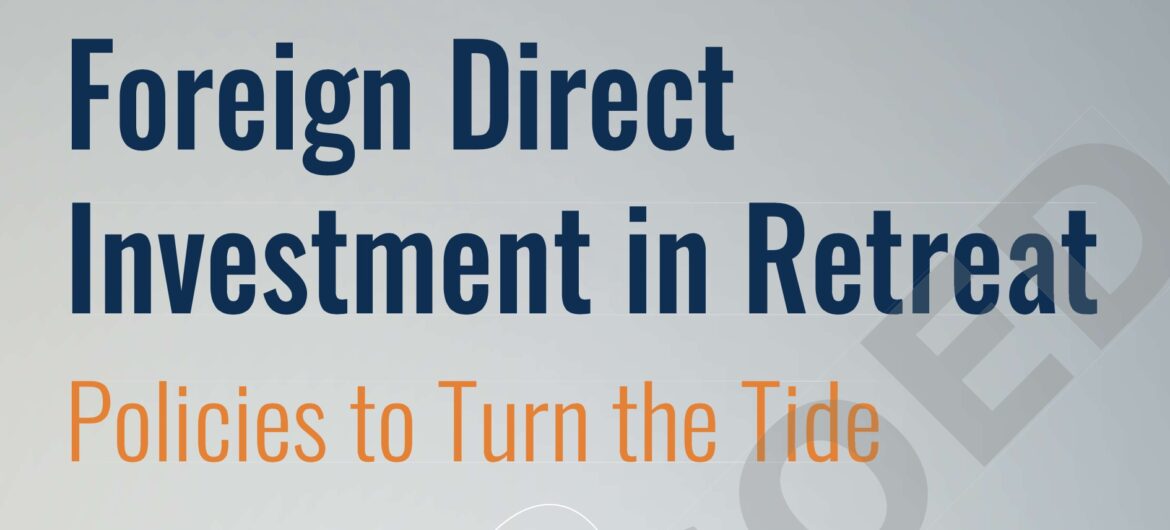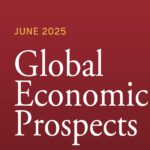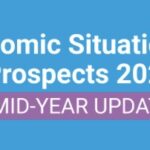Foreign Direct Investment (FDI) into developing economies plunged to its lowest level since 2005 in 2023, highlighting growing vulnerabilities across emerging markets and intensifying concerns over financing sustainable development. According to a new World Bank report, surging trade and investment barriers, coupled with worsening global debt levels, have curtailed a crucial source of capital for low- and middle-income countries.
Total FDI inflows to developing economies fell to $435 billion last year—an 18-year low—impacting nearly 60 percent of emerging market and developing economies (EMDEs). FDI inflows accounted for just 2.3 percent of GDP in these economies, down from their peak of 4.5 percent in 2008.
Advanced economies fared little better, receiving only $336 billion in FDI—marking their weakest performance since 1996. Overall, the slowdown reflects a systemic retreat in cross-border capital movement, with policymakers increasingly prioritizing protectionist and inward-looking strategies.
“It’s no coincidence that FDI is plumbing new lows at the same time that public debt is reaching record highs,” said Chief Economist and Senior Vice President at the World Bank Group, Indermit Gill. “Governments have been erecting barriers to trade and investment when they should be taking them down.”
India Defies the Trend
Amid this widespread decline, India emerged as a relative bright spot. Between 2012 and 2023, it attracted 6 percent of all FDI into developing economies—behind only China (nearly one-third) and Brazil (10 percent). The data reflects India’s sustained appeal to foreign investors, driven by macroeconomic stability, demographic advantages, and ongoing digital and infrastructure reforms.
South Asia as a whole, however, faces mounting risks. While the report stops short of providing regional breakdowns, the broader trends signal an urgent need for targeted policy interventions across the region to safeguard growth and job creation.
A Shrinking Pool of Global Capital
The World Bank warns that the sharp decline in FDI is not merely cyclical but rooted in structural policy failures. In 2025, half of all FDI-related policy changes announced by developing countries have been restrictive—the highest such ratio since 2010.
Multilateral investment treaties and new trade agreements—key drivers of FDI—have also slowed dramatically. Between 2010 and 2024, only 380 new investment treaties were enacted, compared to more than 1,100 in the 1990s. Similarly, the average number of new trade agreements has dropped from 11 per year in the 2010s to just six annually in the 2020s.
“Reversing this slowdown is not just an economic imperative—it’s essential for job creation and sustainable growth,” said Deputy Chief Economist and Director of the World Bank’s Prospects Group, M. Ayhan Kose. “It will require bold domestic reforms and renewed global cooperation.”
FDI as an Engine of Growth
The report reaffirms that FDI remains one of the most productive forms of external financing. In developing economies, a 10 percent increase in FDI inflows leads to a 0.3 percent rise in GDP after three years. This impact can rise to 0.8 percent in countries with strong institutions, better human capital, open trade policies, and a more formalized economy.
Despite this potential, FDI remains concentrated. Two-thirds of total FDI inflows over the past decade went to just 10 countries. China, Brazil, and India led the pack, while the 26 poorest countries received only 2 percent of the global total. Moreover, nearly 90 percent of all FDI into developing economies originated from advanced economies—primarily the European Union and the United States.
A Call to Action Ahead of Seville Summit
The findings arrive ahead of the Conference on Financing for Development in Seville, Spain (June 30–July 3), where global leaders will gather to discuss strategies for bridging the development financing gap.
To reverse the downturn and revive investor confidence, the World Bank recommends three strategic priorities for developing economies:
Redouble Efforts to Attract FDI: This includes rolling back restrictive policies and improving macroeconomic fundamentals such as labor productivity. A 1% increase in labor productivity correlates with a 0.7% rise in FDI inflows.
Amplify Economic Impact: Countries must foster trade openness, institutional reform, and human capital development. FDI can also be directed toward sectors with high social returns—such as clean energy, healthcare, and gender-inclusive employment.
Advance Global Cooperation: Multilateral efforts are vital to channel FDI into regions with the greatest need. Institutions like the World Bank are mobilizing private capital through risk-sharing instruments and technical support for policy reform.
South Asia’s Imperative
For South Asian countries, the message is unequivocal: the window to attract and benefit from foreign capital is narrowing. With slowing aid flows, rising debt, and demographic pressures, the region must implement forward-looking reforms to stay competitive. This includes reducing regulatory hurdles, deepening regional trade ties, and leveraging digitalization to improve transparency and efficiency.
“FDI is not just capital—it’s a vote of confidence in a country’s future,” said Gill. “Emerging economies must act now to ensure they remain attractive, stable, and open destinations for global investors.”






